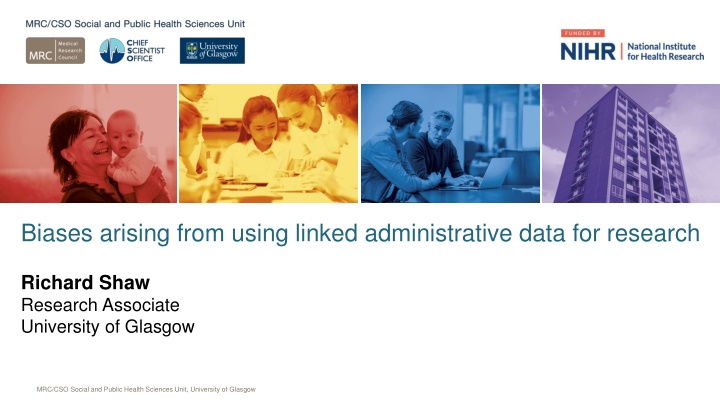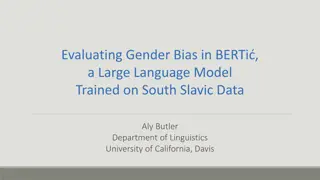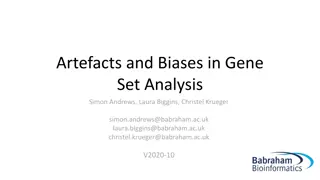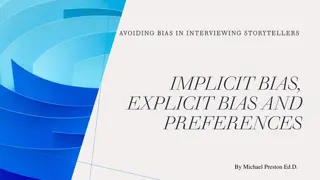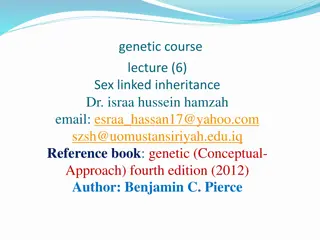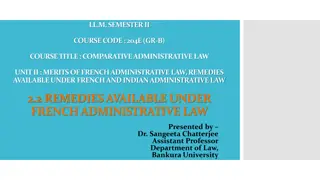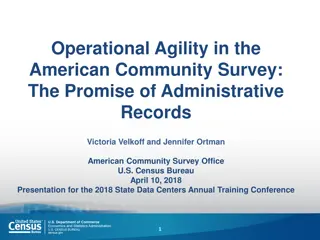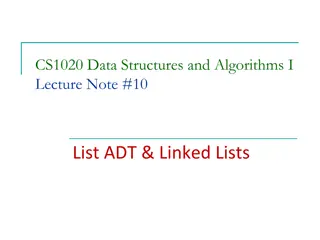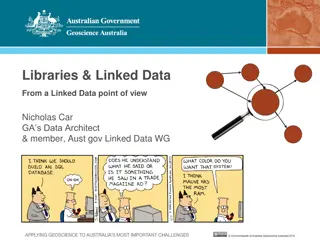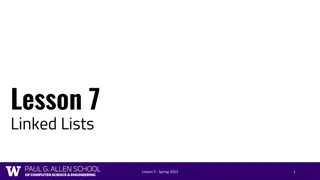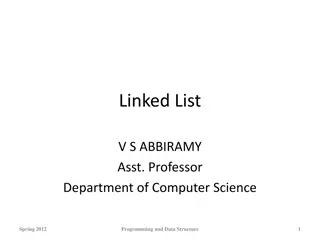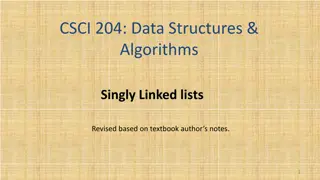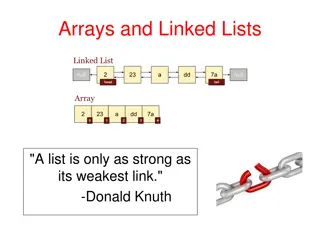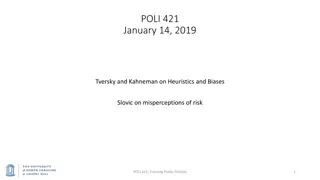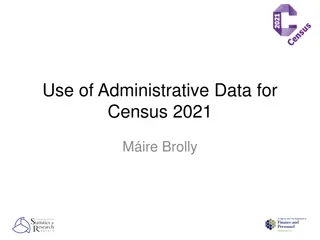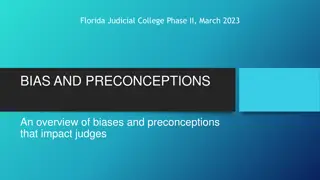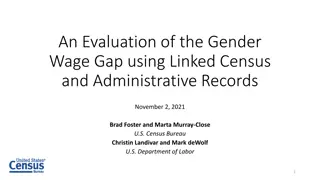Biases arising from using linked administrative data for research
Evaluating social policies using data from the 100 Million Brazilian Cohort Family members who applied for social assistance (2001-2015) and registered in the Cadastro Único para Programas Sociais (CadÚnico) database. This research aims to improve understanding of potential sources of bias when using linked administrative data in research.
Download Presentation

Please find below an Image/Link to download the presentation.
The content on the website is provided AS IS for your information and personal use only. It may not be sold, licensed, or shared on other websites without obtaining consent from the author.If you encounter any issues during the download, it is possible that the publisher has removed the file from their server.
You are allowed to download the files provided on this website for personal or commercial use, subject to the condition that they are used lawfully. All files are the property of their respective owners.
The content on the website is provided AS IS for your information and personal use only. It may not be sold, licensed, or shared on other websites without obtaining consent from the author.
E N D
Presentation Transcript
Biases arising from using linked administrative data for research Richard Shaw Research Associate University of Glasgow MRC/CSO Social and Public Health Sciences Unit, University of Glasgow
Motivation - Evaluating social polices using data from the 100 Million Brazilian Cohort Family members who applied for social assistance (2001 to 2015) and registered in the Cadastro nico para Programas Sociais (Cad nico) database 114 Million people - 57% those most disadvantaged and in need of support Social policy data include: Receipt of Bolsa Familia and Minha Casa, Minha Vida Socio-demographic information Linked to health related data including: Mortality / Sistema de Informa o sobre Mortalidade (SIM) Hospital care / Sistema de informa es Hospitalares do SUS Early results inconsistent with theory: Lack of appreciation of how administrative data differs from research data? Aim: Improve understanding of potential sources of bias when using linked administrative data in research MRC/CSO Social and Public Health Sciences Unit, University of Glasgow
A schematic illustrating with the 100 Million cohort possible sources of bias created by linking administrative data Variables Registration and Recording Linkage Data sets Cleaning and Coding Population Databases Mortality Information System (SIM) Linkage variables Missing or invalid data Person dies Person receives hospital treatment Hospital Information System (SIH) Garbage Codes Ill defined death codes Live Birth Information System (SINASC) A person is born 100 Million Cohort Extracts Unified Registry (Cadastro nico CadUnico) Exposure and Confounder Missing or poor quality data Cash Transfer Program (Bolsa Famiia PBF) Person eligible for social security Housing Progamme (Minha Casa Minha Vida) Other social programs MRC/CSO Social and Public Health Sciences Unit, University of Glasgow
Registration and recording (Denominator) Recording and registration will lead to different types of biases depending on role data is used for in study Registration in the Cad nico principally determines the denominator of the population Selection bias representativeness and generalisability of sample Different implication for descriptive and causal epidemiology Select areas or groups with fewer registration problems to improve internal validity at the expense of external validity MRC/CSO Social and Public Health Sciences Unit, University of Glasgow
Registration and recording (Numerator) The non registration or recording health events impact on the numerator Misclassification bias (always underestimate) Potential to alter social gradients Mortality registration by education (Costa 2020) 98.6% registered in most educated municipalities 93.8% registered in least educated municipalities Health-care funded by the Unified Heatlhcare system (Sistema Unico de Saude) is registered For elective services many patients that can afford it use private healthcare services For some health outcomes that could lead to inflated estimates of health inequalities Costa, L. F. L., M. de Mesquita Silva Montenegro, D. d. L. Rabello Neto, A. T. R. de Oliveira, J. E. d. O. Trindade, T. Adair and M. d. F. Marinho (2020). "Estimating completeness of national and subnational death reporting in Brazil: application of record linkage methods." Population Health Metrics 18(1): 22. MRC/CSO Social and Public Health Sciences Unit, University of Glasgow
Linkage The linkage process 100M cohort and Mortality Information System (SIM) risks errors (misclassification biases) Missed link - a person may be considered alive when not False link a person may classified as dead when alive At individual level missed links very hard to identify Require complete population coverage to identify Small proportion of 100 Million cohort expected to die in any period Not all deaths in SIM will be for the 100 Million cohort Identifying missed links and false links at individual level may not be possible with anonymized data Area level information can be used to identify areas where linkages may be more accurate MRC/CSO Social and Public Health Sciences Unit, University of Glasgow
Cleaning and Coding Two groups with different skills and knowledge Data scientists linking data together Clean and code linkage variables Documenting distribution of linkage variable could identify source of bias Requires planning in advance if linkage is computationally intensive greater collaboration between data scientists and analysts required Analysts - Epidemiologists, statisticians, demographers Cleaning and coding should be informed by knowledge of the whole process MRC/CSO Social and Public Health Sciences Unit, University of Glasgow
Options to help minimise potential sources bias Consider the whole pathway deriving linked data for analysis Identify and plan for possible sources of bias at start of project Collaboration needed between analysts and data scientists linking the data Ability to identify potential sources of bias needs to be considered alongside issues of confidentiality and privacy Training needed on sources of bias for all stakeholders involved in using administrative data for research Focusing on areas or groups with lower risk of bias to improve internal validity MRC/CSO Social and Public Health Sciences Unit, University of Glasgow
Acknowledgements Collaborators Julia Pescarini, Elzo Junior, Andressa Siroky, Robespierre Pita, Mauricio Barreto - CIDACS, Salvador Mirjam Allik, Desmond Campbell, Ruth Dundas, Alastair Leyland, Srinivasa Vittal Katikireddi - University of Glasgow Katie Harron, University College London Funders NIHR Public Health Research Board richard.shaw@glasgow.ac.uk @rickwahs MRC/CSO Social and Public Health Sciences Unit, University of Glasgow
